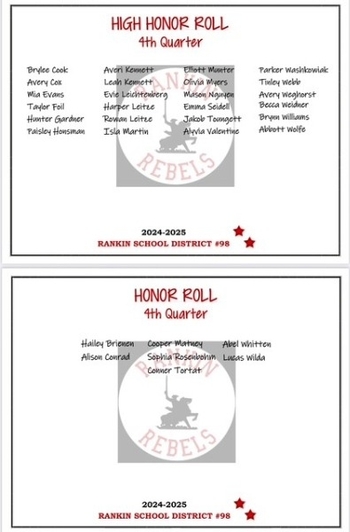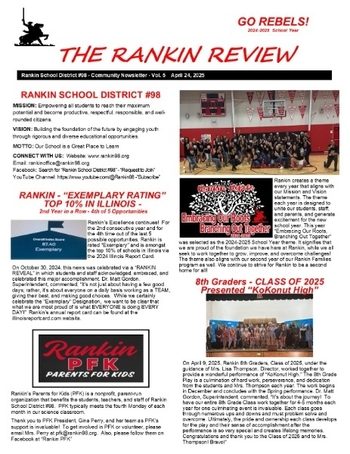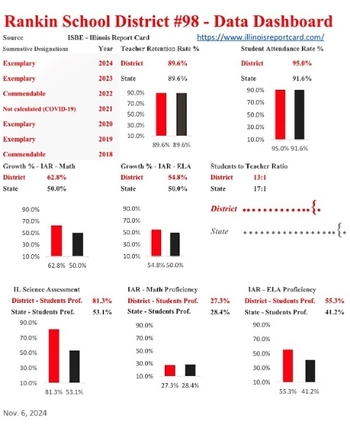Current job openings or anticipated openings
---------------------------------------------------------
#'s 1&2 6/30/25
JOB OPENINGS (1-2)
OPENINGS: (1-2) Paraprofessionals/Teacher’s Aides for the 2025-2026 School Year - 5 Days a Week and/or Modified Schedule Available
QUALIFICATIONS: Proof of Paraprofessional Endorsement or ability to obtain Paraprofessional Endorsement by August 12, 2025
HOURS: Hours can be flexible and can be coordinated with candidates - $15.00 per hour.
APPLICATION PROCESS: Send email as the cover letter and attach resume to:
Dr. Matt Gordon, Superintendent
Rankin School District #98
mgordon@rankin98.org
*Candidates who apply will receive email notification for receipt of application within 48 hours. If you don’t receive an email receipt, please follow up with a phone call at 309-346-3182 to ensure email application was received.
START DATE: August 12, 2025
APPLICATION DEADLINE: Open until filled
Rankin School District #98 is an equal opportunity employer
-------------------------------------------------------------
#3 6/26/25
Rankin School District #98
ANTICIPATED JOB OPENING
ANTICIPATED JOB OPENING: (ADDITIONAL) Assistant Track and Field Coach (Boys and Girls)
INFORMATION: Currently, the boys and girls’ track and field teams each have a head coach and an assistant coach. The District is exploring adding an additional assistant track and field coach for the upcoming season to work with both teams. If this position is officially approved via an agreement by the Rankin Association of Teachers and Board of Education, it would be with the understanding that the position is a trial for a year versus being permanent. Upon completion of the upcoming track and field season, this position would be evaluated to determine the best plan of action moving forward. The District is seeking a person to work with both teams who has knowledge of field events and/or has interest in field events, and who is willing to assist with supervision of our student-athletes.
APPLICATION PROCESS: Send email as the cover letter and attach resume to:
Dr. Matt Gordon, Superintendent
Rankin School District #98
mgordon@rankin98.org
*Candidates who apply will receive an email reply within 48 hours to serve as the receipt of the application. Candidates who do not receive an email reply within 48 hours are encouraged to call 309-346-3182 to confirm email application was received.
INTERVIEWS: Interviews will be conducted by Mr. Nick Beard, Principal/Athletic Director
SALARY: 3.1% of the base salary for teachers for the 2025-2026 school year found in the Rankin Association of Teachers Agreement
APPLICATION DEADLINE: August 18, 2025, 3:00 p.m.
START DATE: Spring of 2026
Rankin School District #98 is an equal opportunity employer
---------------------------------------------
#4 6/20/25
JOB OPENING: Assistant Volleyball Coach
APPLICATION PROCESS: Send email as the cover letter and attach resume to:
Dr. Matt Gordon, Superintendent
Rankin School District #98
mgordon@rankin98.org
*Candidates who apply will receive an email reply within 48 hours to serve as the receipt of the application. Candidates who do not receive an email reply within 48 hours are encouraged to call 309-346-3182 to confirm email application was received.
INFORMATION: Salary and Benefits - Rankin Association of Teachers Agreement .
APPLICATION DEADLINE: Open until filled
START DATE: Winter 2025
Rankin School District #98 is an equal opportunity employer







